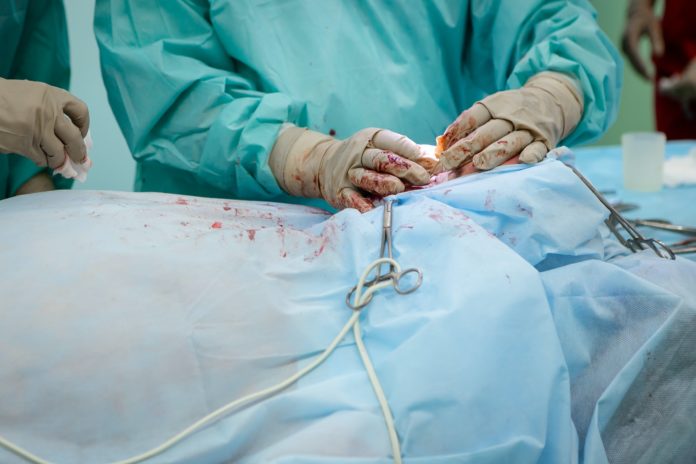Knee arthroscopy is the surgical procedure used to diagnose and treat problems associated with the knee joint. During this procedure, the orthopedic surgeon will make a small incision and insert an arthroscope into the knee. This will let them view the inside of the knee joint on a screen. The orthopedic surgeon can then investigate the problem with the knee joint and, if necessary, treat the issue using small instruments during the arthroscopy procedure.
An arthroscopy can diagnose several knee problems, like a torn meniscus or a misaligned kneecap and can also repair the ligaments of the knee joint. Knee arthroscopy can diagnose and treat various conditions such as dislocated knees, meniscus injuries, ACL tears, cartilage injuries, etc. There are very less risks to this procedure and the outlook of arthroscopy is excellent for most patients. The recovery time will depend on the complexity of the required procedure and severity of the problem.
There are a variety of procedures which can be performed using the arthroscopic procedure. Apart from knee arthroscopy, other common orthopedic arthroscopic procedures include-
- For the shoulder: tendonitis, bursitis, arthritis damage, rotator cuff injuries, frozen shoulder, labral tears, and so on.
- For the Ankle: bone spurs, posterior ankle pain, damaged cartilage, scar tissue, etc.
- For the Hip: snapping hip syndrome, labral tears, arthritis damage, loose or damaged cartilage, etc.
Procedure of Knee Arthroscopy
Arthroscopy surgery is much less complex and invasive, as compared to the traditional open surgery. Before the arthroscopy surgery, the patient is given a general, local, or spinal anesthesia. The use of anesthetic will vary on the basis of the problem. During the procedure, the orthopedic surgeon will make a small incision and through the incision, the arthroscope will be inserted. The surgeon may insert specially small surgical instruments through the incision to treat the injury. After the procedure, the doctor will advise the patient necessary post-operative medications and tips for recovery.
What are the benefits of Knee Arthroscopy?
Knee Arthroscopy is an effective procedure for diagnosing various conditions of the knee joints and deciding on the right treatment for the problems related to the knee, including meniscus tear and cartilage wear. Knee arthroscopy procedure ensures permanent relief from knee pain and also improves mobility.
The major benefit of this procedure is the ability to resume the normal functioning of the knee. This procedure is minimally invasive and enables maintaining a normal and active lifestyle which is filled with comfort. The key advantage of knee arthroscopy over the traditional open surgery is that during the knee arthroscopy, the surgeon does not need to fully open the knee joint.
With the knee arthroscopy procedure, the recovery time is reduced and the success rate of the surgery is also higher, compared to other surgical methods. As a very small incision is made, the scar after this procedure is very less. The patients will be able to resume their regular lifestyle and activities within a few days.
The following are the major benefits of knee arthroscopy:
● Less recover time
● Lesser dissection
- Small incision
● Fewer stitches
● Quick healing time
● Minimal pain and discomfort during recovery
● Reduced risk of infection
● Early return to normal activities
Knee arthroscopy is less invasive than the traditional forms of surgery. The orthopedic surgeon can diagnose the issues and treat them using an arthroscope, which can be passed through a small incision.
Why is Knee Arthroscopy performed?
Knee arthroscopy procedure can be helpful in diagnosing a range of problems associated with the knee, including:
- Damaged anterior cruciate ligament (ACL)
- Damaged medial collateral ligament (MCL)
- Damaged ulnar collateral ligament (UCL)
- Persistent pain and stiffness in the knee joint
- Arthritis
- Tendonitis
- Bursitis
- Bone fractures
- Bone spurs
- Baker’s cysts
- Ganglion cysts
- Damaged cartilage
- Buildup of fluid
- Damaged or deteriorating cartilage
- Torn or damaged meniscus
- Plica syndrome (Irritated, enlarged, or inflamed knee)
- New cartilage stimulation
- Cartilage transfer
- Loose cartilage
- Torn rotator cuff or labrum
Consult best orthopedic surgeons for your Arthroscopic Knee Surgery
If you want to get maximum benefits from the knee arthroscopy procedure, it is important to choose the best orthopedic surgeon in India for your procedure. Knee arthroscopy procedure when carried out by an experienced and trained orthopedic surgeon can be highly effective in treating joint problems.
Knee arthroscopy is a minimally invasive and easy method of diagnosing and treating issues regarding the knee joint.

